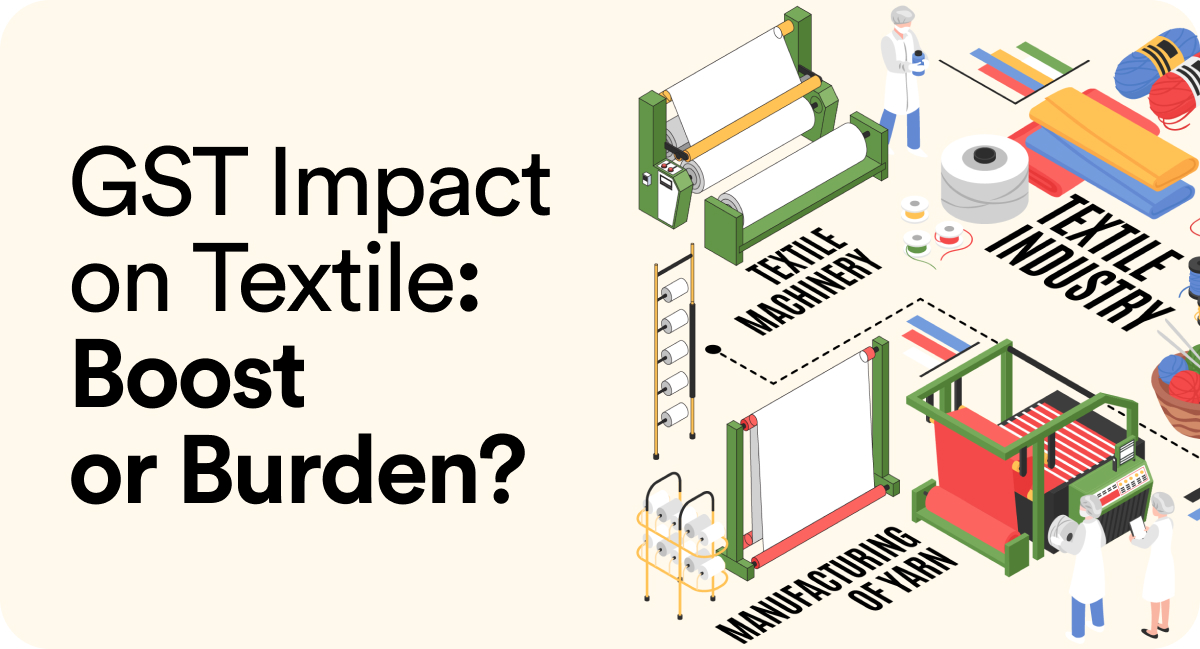
On July 1, 2017, India hit the reset button with the Goods and Services Tax (GST), shaking up the entire tax system. For textiles, this meant a uniform tax rate from raw materials to finished goods. Before GST, businesses had to juggle a ton of taxes at every step—from manufacturing to retail. It was like a tangled mess of threads, confusing and expensive. But now? Things are way smoother.
One of the best things with GST is the Input Tax Credit (ITC). Sounds fancy, but it’s pretty simple: businesses can claim back taxes paid on raw materials, machinery, and other inputs. This lowers production costs, making products cheaper for consumers. Imagine paying tax on cotton, then getting that money back when you turn it into a shirt. The result? Lower costs and better prices for everyone.
GST also cleaned up the mess of taxes like VAT, excise, and service tax, rolling them into one. This means less paperwork and less headache for businesses. It’s like switching from a complicated DIY project to a one-step, no-fuss assembly.
For textile exporters, GST has been a total game-changer. Before GST, taxes were slapped on at every stage, making exports more expensive. But now? Exports are tax-free. That’s right—no taxes on what goes out of India. This makes Indian textiles more competitive on the global stage, opening up new markets and giving businesses a major edge.

Okay, it’s not all sunshine and rainbows. The shift to GST has thrown up some challenges. The compliance system is new, and businesses have to stay on top of it—filing returns on time, and keeping track of everything.
But it’s not impossible. Once businesses get the hang of it, they’ll find that the benefits far outweigh the extra paperwork.

Let’s talk about ITC again, because it’s such a huge win for the textile industry. Imagine this: You buy raw cotton and pay tax on it. When you turn that cotton into fabric, you don’t pay tax on top of that cotton tax.
Instead, you can claim it back. That’s ITC in action. It’s like getting a refund for the taxes you already paid, making production cheaper and more efficient.
For exporters, this is even better. No extra tax means they can sell at more competitive prices in international markets. It’s all about saving money and staying ahead of the game.

Now, let’s break down the GST rates for textiles in India. They’ve got two main categories:
✦ Raw Materials and Fabrics:
Most raw materials and fabrics—like cotton, wool, and silk—are taxed at 5%. This low rate helps reduce the cost of making textiles, making life easier for manufacturers.
✦ Finished Goods (Garments and Apparel):
Finished products like garments are typically taxed at 12%. But if a garment costs less than Rs. 1,000, it’s taxed at just 5%. This tiered system ensures manufacturers pay lower taxes on raw materials while finished products get taxed higher (which is pretty standard across most industries).
Plus, some eco-friendly or handmade textiles get even lower tax rates to encourage local production and sustainability.
While this system makes life easier, businesses still need to classify their products correctly. Get it wrong, and you could end up overpaying or underpaying taxes. So, it’s important to stay on top of the details.

So, is GST a boost or a burden for the textile industry? Honestly, it’s more of a boost. Sure, there are some growing pains—mainly around compliance, but overall, it’s helping make the supply chain smoother, reducing costs, and putting Indian textiles in a much stronger position globally.
It’s like moving from an old-school sewing machine to a slick, modern one. It might take a minute to get used to, but once you do, you’ll be stitching your way to success.
In short, GST is pushing the textile industry forward. So, businesses that learn the ropes will come out ahead. Get your act together, stay compliant, and enjoy the ride. The future looks pretty good in this new world of GST! ✨
Click on the link here to view the detailed answer.
Click on the link here to view the detailed answer.
Click on the link here to view the detailed answer.
Leave a comment